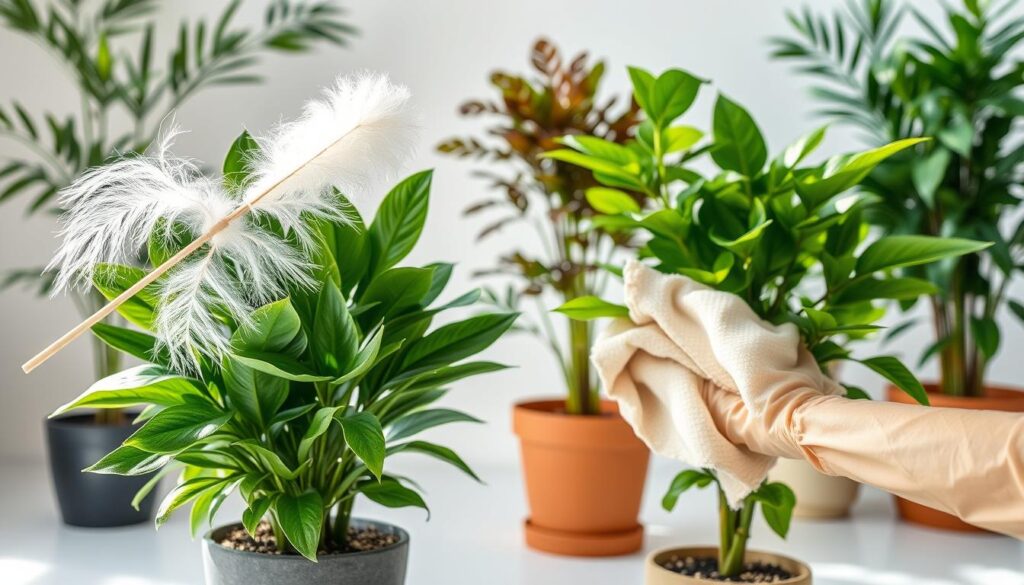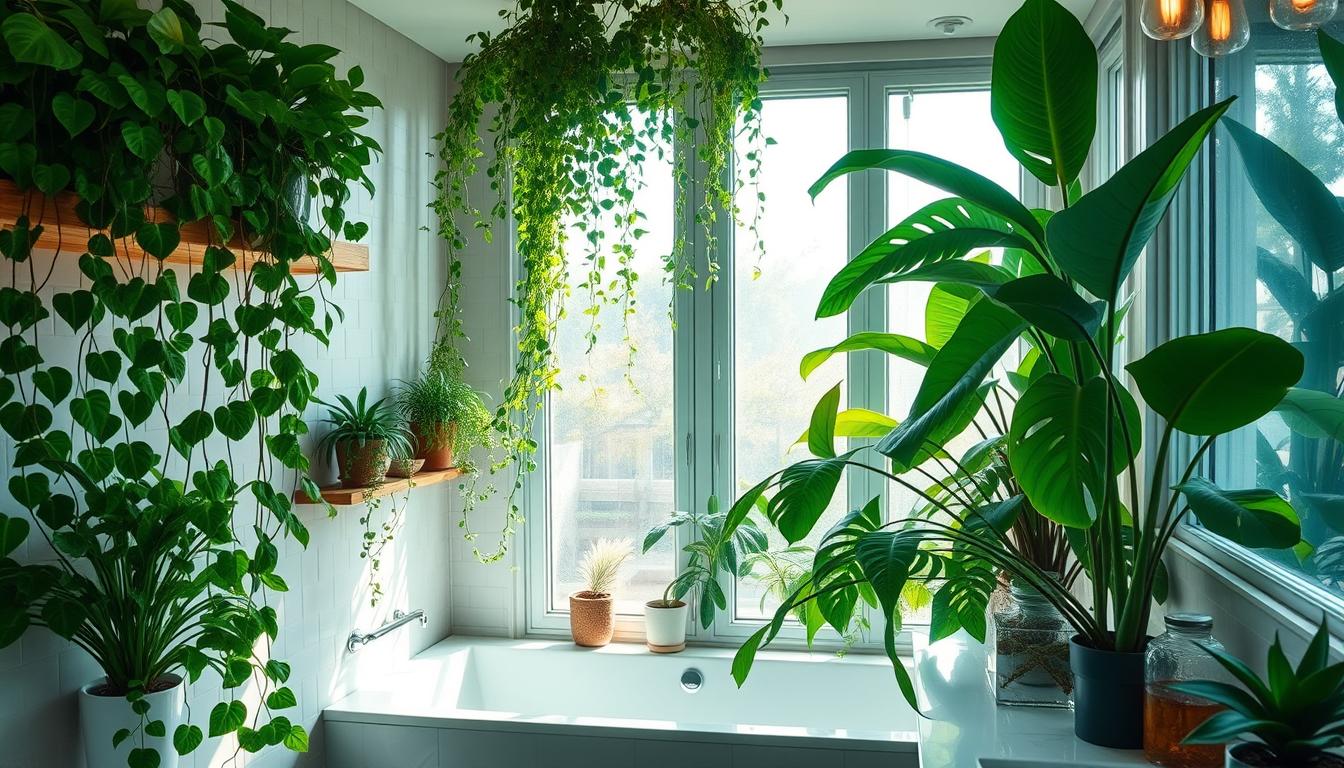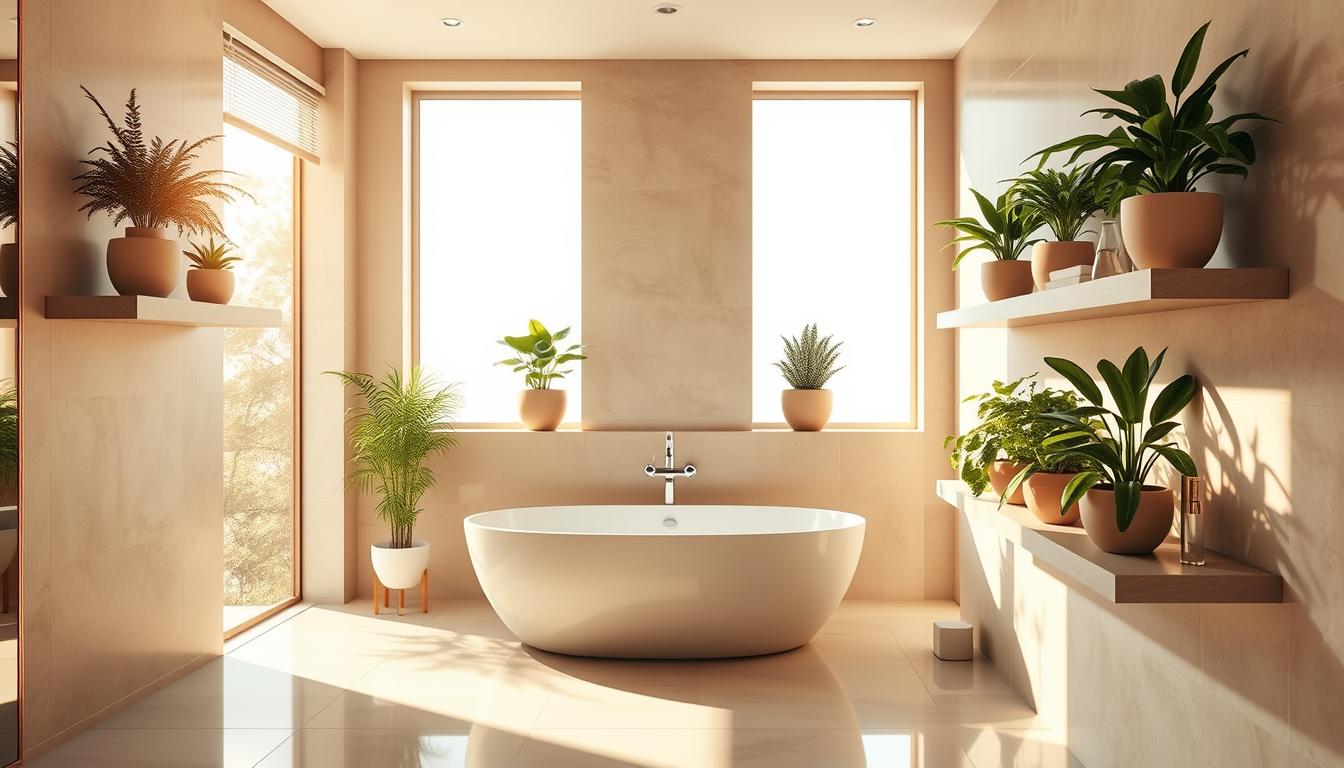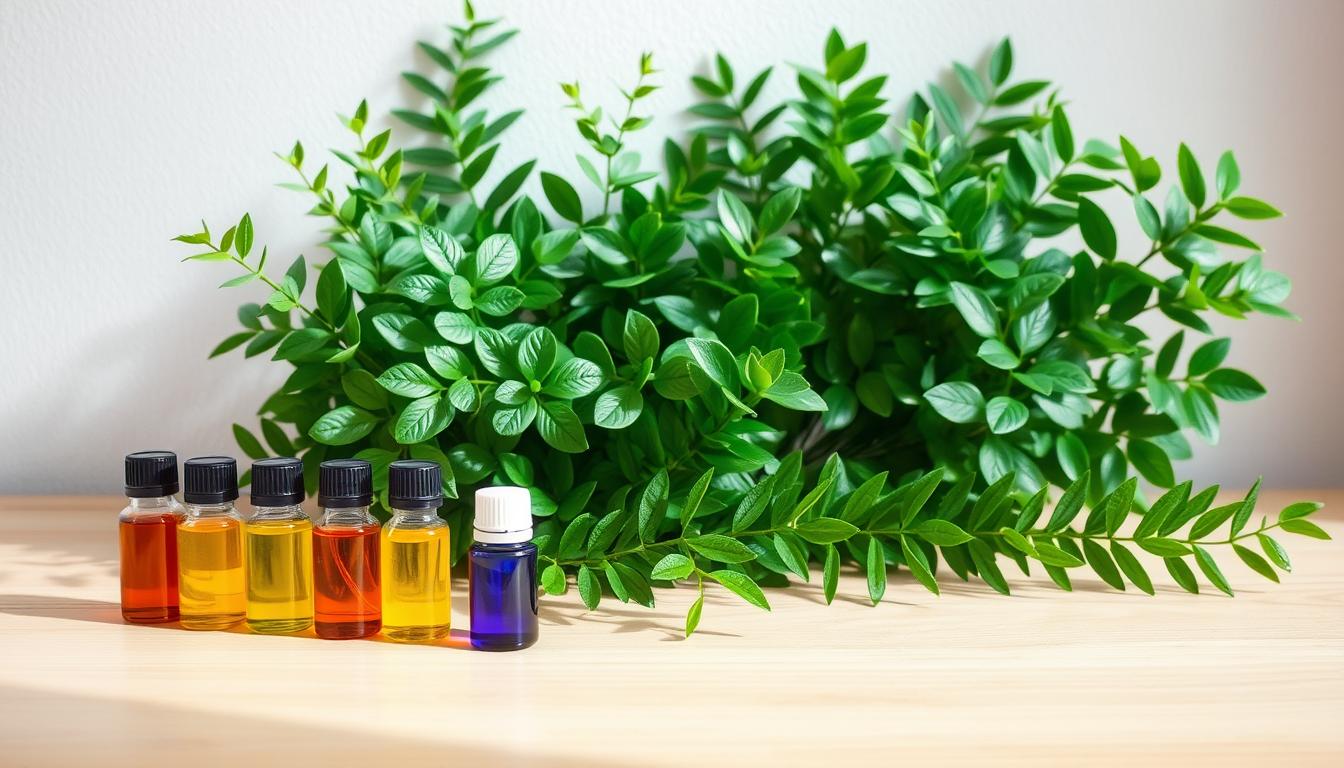Choosing the right tool to clean faux plants is super important. In this article, we’ll look at microfiber dusters and feather dusters, especially when cleaning in a humid bathroom. Both have their benefits for artificial plants care, but knowing their differences helps clean effectively. We’ll dig into how they work and which is better in tough spots, to help you pick the right duster for your faux greenery.
Introduction to Cleaning Faux Plants
Cleaning artificial plants helps keep your space looking fresh. Though they don’t need water, they do get dusty. Removing this dust makes them look better and last longer.
It’s not just about looks; clean faux plants are healthier, too. Dust can carry allergens that affect the air you breathe. By cleaning your plants regularly, you help keep your home environment healthy and welcoming.
Importance of Keeping Faux Plants Clean
Keeping your faux plants clean is very important. Regular cleaning makes them look nice and keeps your home hygienic. When faux plants get dusty, they can make a room feel gloomy.
Enhancing Aesthetics and Home Hygiene
Clean faux plants do more than just look good. They make your space welcoming and keep it clean. By staying on top of cleaning, you also keep dust from spreading around your home.
Health Implications of Dust Accumulation
If you don’t clean your faux plants, dust builds up. This dust can lead to allergies and breathing problems. Cleaning these plants often helps avoid these health issues, making your home safer for everyone.
Microfiber Dusters: Features and Benefits
Microfiber dusters have become a must-have for keeping things clean, especially faux plants. Their design and material are perfect for catching dust without hurting delicate items. These dusters are not just useful but also meet the increasing demand for eco-friendly products.
Effective Dust Trapping Mechanism
What makes microfiber dusters special are their fine fibers. These fibers pick up dust and particles through an electrostatic charge. This means they easily clean faux plants by holding onto dirt and allergens. The softness of microfiber also ensures that even sensitive surfaces won’t get scratched. It’s why these dusters are great for artificial plants.
Reusable and Eco-Friendly Options
In our eco-conscious times, picking green cleaning tools is key. Microfiber dusters come in reusable and washable types, promoting eco-friendly cleaning. By using these, you help cut down on the waste from single-use products. They are not only better for the earth but also cost-effective over time. This way, you can care for your faux plants responsibly and affordably.
Feather Dusters: Features and Benefits
Feather dusters are great for cleaning without damaging faux plants. They gently remove dust from delicate leaves and flowers. These dusters are perfect for keeping faux plants looking their best.
Gentle Dusting for Delicate Surfaces
Feather dusters are made to be gentle on faux plants. They have soft feathers that pick up dust without causing scratches. This is important for the detailed and delicate parts of high-quality faux plants.
Ease of Use for Large Faux Plants
Cleaning big faux plants is easy with feather dusters. They are flexible and light, so you can clean everywhere without trouble. They make regular cleaning simple, even though they might not trap dust as well as microfiber cloths. Feather dusters are best for daily cleaning to keep large faux plants looking nice.
Microfiber vs. Feather Dusters for Humid Bathroom Fake Plants
Cleaning fake plants in a humid bathroom is tricky. Dirt and allergens love such environments. It’s important to know whether microfiber or feather dusters work best in this situation.
Comparative Effectiveness in Humidity
Microfiber dusters work better than feather dusters in humid bathrooms. They trap dust particles well. Feather dusters might just move the dust around. In moist areas, microfiber’s ability to catch dirt really shines.
Material Considerations for Faux Plants
Choosing the right duster for your fake plants matters. Some are made from delicate materials. Microfiber dusters are gentle yet effective, making them great for cleaning these plants. This helps keep your fake plants looking good for longer.
Cleaning Methods for Faux Plants
Faux plants need special cleaning tricks based on their material. Cleaning them often stops dust from piling up. This keeps your home looking great. Here are some smart ways to clean different faux plants.
General Cleaning Techniques
For everyday care, two handy tools work well:
- Microfiber cloths catch dust without harming surfaces.
- Feather dusters softly pick up dust, perfect for fragile faux plants.
Using these tools often will help faux plants stay bright and welcoming. For plants with lots of details, try compressed air to get to hard-to-reach spots.
Specific Techniques for Silk vs. Plastic Plants
Silk and plastic plants need different care. Silk plants do best with dry cleaning, like:
- Using cornmeal to pick up dust; just sprinkle and shake.
- Brushing with a paintbrush or soft cloth to take off dust.
On the other hand, plastic plants can handle more vigorous cleaning. Good methods include:
- Cleaning with a wet cloth.
- Using soapy water for tough grime.
Be careful with water to avoid damaging the plants. With the right care for silk and plastic plants, they’ll keep making your space more beautiful.

How Often Should You Clean Faux Plants?
Knowing when to clean faux plants is key for keeping them looking great and lasting long. The faux plant cleaning frequency depends on the environment and dust levels. By cleaning them regularly, you keep your decor looking its best and make your faux plants last longer.
Weekly Dusting Recommendations
A weekly light dusting is good for most homes. Use a microfiber cloth or a feather duster for this. This stops dust from building up and keeps your faux plants shiny. Dust more often if your home is dusty or you have pets.
Seasonal Deep Cleaning Advice
It’s important to deep clean your faux plants, in addition to dusting. Here’s how to deep clean:
- Deep clean every month or every season.
- Try cleaning with a shower or vinegar solution for best results.
- Outdoor faux plants and those in busy areas need more frequent deep cleans.
Following these deep cleaning advice tips will help keep your faux plants looking new for many years.
Choosing the Right Duster for Your Faux Plants
When looking for the right duster for faux plants, consider a few things. The plant’s size, what it’s made of, and how much dust it collects are key. Microfiber dusters are great because they catch dust well. This makes them perfect for fragile surfaces. Feather dusters are good for soft, easy dusting. They won’t harm your faux plants.
Factors to Consider When Selecting a Duster
- Size of the Plants: Choose a duster that matches the scale of your faux plants to reach all areas.
- Material Sensitivity: For plants made from silk or other delicate materials, use microfiber options.
- Dust Exposure: Assess the environment; high-dust areas may require more robust cleaning tools.
Best Practices for Duster Maintenance
To keep your dusters working well, proper care is important. For microfiber dusters, wash them as needed to keep them picking up dust. Always follow what the manufacturer says for cleaning. Feather dusters should be shaken outside. This gets rid of the dust they’ve picked up. Taking good care of your dusters makes them work better. It also helps keep your faux plants cleaner.
Consumer Insights: Reviews and Recommendations
Review insights show how people feel about different dusters for faux plants. Many enjoy using microfiber dusters. They are great at catching dust without hurting the plants.
Feather dusters, however, are praised for being gentle. They’re especially good for big faux plants. The feedback shows they’re not as good at catching dust but are easy to use.
Using both duster types is a smart cleaning strategy. Having a microfiber for deep cleans and a feather duster for quick dust-offs works best. This mix meets many cleaning needs, per user reviews.
Conclusion
The choice between microfiber and feather dusters is very important for keeping faux plants clean. Microfiber dusters are great at catching dust and help the environment too. They are perfect for those who care about being eco-friendly. On the other hand, feather dusters are gentle and ideal for delicate plants.
Think about what you prefer and what your home needs, like how humid it is. Following the right cleaning routine makes faux plants look better and last longer. Keeping them clean will help your home look good and feel healthy, creating a lively place to live.



